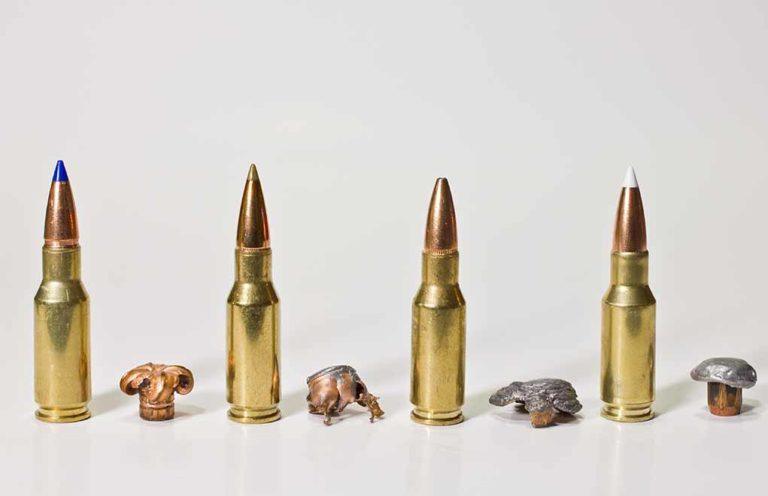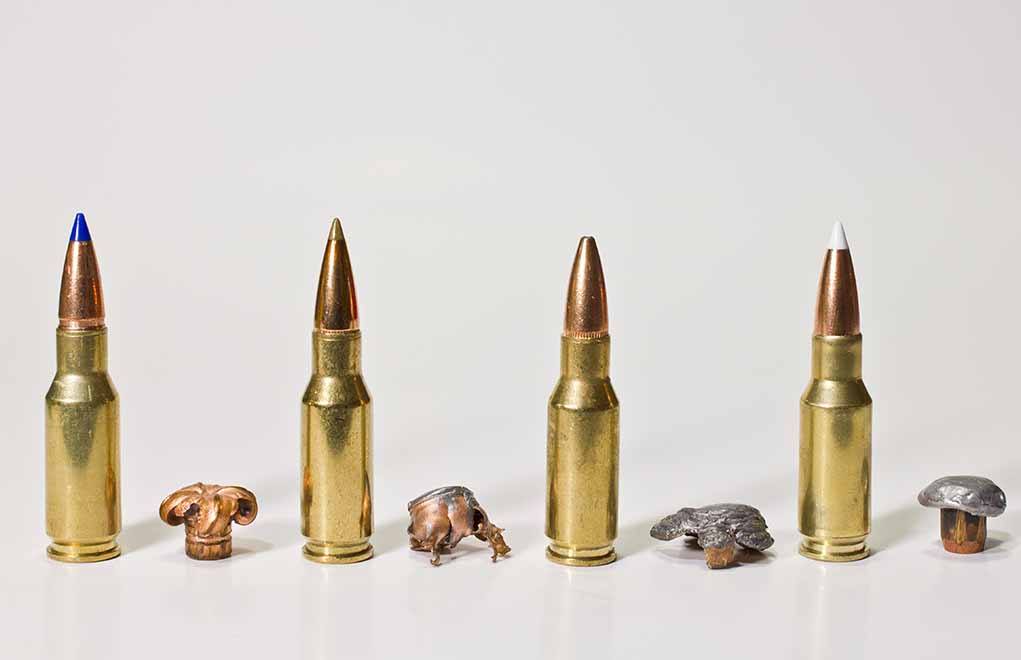

Bullet expansion is a tricky subject. You might think the lead-core variety mushrooms more quickly than a solid-copper one, but it's not the case.
What are the basics of bullet expansion:
- Bullet expansion occurs as soon as its impact begins.
- At a certain depth, a bullet ceases to expand do to loss of velocity.
- Softer metals, such as lead, tend to expand more simply because they require less velocity to deform.
One of my favorite misconceptions is the notion that some bullets expand faster than others. Experts, who believe softer bullets deform at a faster rate than hard bullets, commonly espouse this myth. The “fast-expanding bullet” term is most often used to delineate between bullets with a lead-alloy core and bullets made from a single metal, such as copper or gilding metal. Granted, from a simply logical position, it seems to make sense that a hard bullet would take more time to deform than a soft bullet.

The problem is, the exact opposite is actually the case.
Here’s the thing: Bullet deformation occurs as soon as impact begins, regardless of how “hard” the bullet might be. In fact, the best chance a bullet has to deform or expand is upon initial impact because that’s when it’s going the fastest. Any forward progression of the bullet after impact occurs at a slower velocity because every millisecond a bullet mores forward, it decelerates.
Now, a hard bullet like a Barnes Triple-Shock, which is made of all cooper, needs to impact at something close to 2,000 fps in order for expansion to initiate. Total expansion — or all that will be experienced — occurs very rapidly, over a distance as short as about 2 inches. On the other hand, a softer bullet can still deform when traveling as slow as about 1,600 fps. If it strikes a target at 2,000 fps, it can continue to deform until it slows below 1,600 fps because the bullet materials require less energy to deform them. This means that it will cover a greater distance — as much as 5 inches — before it loses the energy necessary to deform.
So, in reality, the harder expanding bullet fully deforms faster than the soft bullet. Along those same lines, you’ll sometimes hear hunters say, “The bullet was so tough and the animal so small, it did not have enough time, or meet enough resistance, to expand.” This, too, is BS. Even the toughest expanding bullet, from say a .300 Winchester Magnum, will be fully expanded after only penetrating about two to 2½ inches of animal or test medium.

The deeper a bullet goes, the more it slows, and the less potential it has to deform. Some bullets might reach complete expansion sooner and over a shorter distance than others: Chances are, however, they’re just not the bullets you thought they were.
Editor's Note: This article originally appeared in the April 2019 issue of Gun Digest the Magazine.
Smashing Other Ballistic Myths:
- .45 ACP vs 9mm: Which Is Better?
- Are Ballistic Gel Penetration Tests Gospel?
- What You Need To Know About Handgun Stopping Power
- Is Sectional Density A Good Measure Of A Bullet’s Penetration Potential?
- The Truth About Barrel Length And Velocity

Next Step: Get your FREE Printable Target Pack
Enhance your shooting precision with our 62 MOA Targets, perfect for rifles and handguns. Crafted in collaboration with Storm Tactical for accuracy and versatility.
Subscribe to the Gun Digest email newsletter and get your downloadable target pack sent straight to your inbox. Stay updated with the latest firearms info in the industry.

![Best Concealed Carry Guns In 2025 [Field Tested] Wilson Combat EDC X9S 1](https://gundigest.com/wp-content/uploads/Wilson-Combat-EDC-X9S-1-324x160.jpg)


![Best 9mm Carbine: Affordable PCCs [Tested] Ruger Carbine Shooting](https://gundigest.com/wp-content/uploads/Ruger-Carbine-Shooting-100x70.jpg)
![Best AR-15: Top Options Available Today [Field Tested] Harrington and Richardson PSA XM177E2 feature](https://gundigest.com/wp-content/uploads/Harrington-and-Richardson-PSA-XM177E2-feature-100x70.jpg)
